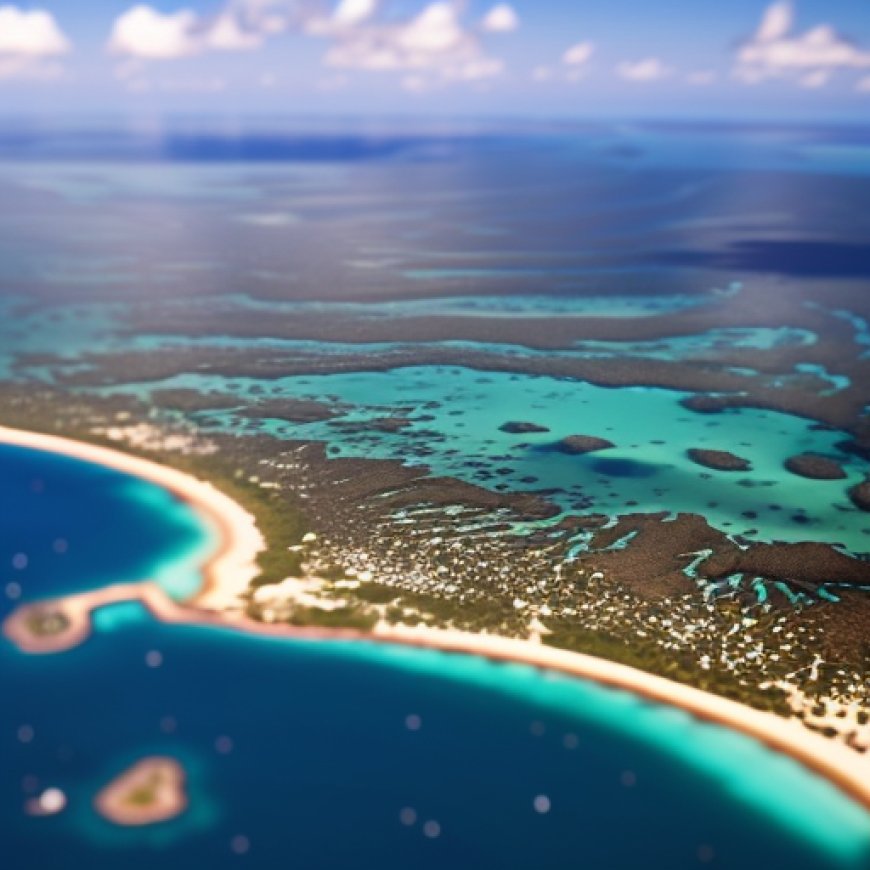Public urged to join fight for Australia’s Great Barrier Reef
Public urged to join fight for Australia’s Great Barrier Reef Voice of America - VOA News


Analysis of Great Barrier Reef’s Health Underway in Australia

Introduction
The Great Reef Census, now in its fourth year, is a rapidly growing conservation project aimed at assessing the health and degradation of the Great Barrier Reef. This annual event collects over 25,000 images from divers, tourism operators, and recreational boats, providing valuable information about the state of the world’s largest coral system.
The Importance of the Great Barrier Reef
The Great Barrier Reef, stretching for 2,300 kilometers along Australia’s northeastern coast, faces numerous threats including global warming, pollution, overfishing, and coral-eating crown of thorns starfish. It is crucial to monitor and protect this natural treasure to ensure its long-term survival.
Involvement of Citizen Scientists
The Great Reef Census encourages citizen scientists from around the world to participate in the analysis of the collected images. By utilizing an AI-assisted platform, the project aims to involve individuals in generating data that is comparable in accuracy to that of reef experts. Analyzing an image takes as little as one minute and can contribute to prioritizing conservation efforts and identifying key source reefs.
Identifying Key Source Reefs
Through the analysis of images, the public can help identify key source reefs that have shown resilience and escaped significant degradation. These healthy reefs play a crucial role in aiding nearby reefs’ recovery, making their identification essential for conservation efforts.
The Impact of Bleaching Events
The Great Barrier Reef is currently experiencing another widespread bleaching event. Corals bleach when they are stressed by changes in water temperature, light, or nutrients. This leads to the expulsion of symbiotic algae, resulting in the coral turning white and exposing its skeleton. The mass bleaching observed on the Great Barrier Reef is attributed to a marine heatwave caused by high ocean surface temperatures.
Global Significance of the Bleaching Event
The recent mass bleaching event on the Great Barrier Reef is part of the fourth global mass bleaching event. This event has been observed worldwide and is considered the most severe and extensive bleaching event on record. Reefs are highly vulnerable to warming sea temperatures, making them one of the ecosystems most at risk from climate change.
Conclusion
The Great Reef Census plays a vital role in monitoring the health of the Great Barrier Reef. By engaging citizen scientists and utilizing AI technology, the project generates valuable data for conservation efforts and identifies key source reefs. However, urgent action is needed to address the threats facing the reef and ensure its long-term survival.
SDGs, Targets, and Indicators Analysis
1. Which SDGs are addressed or connected to the issues highlighted in the article?
- SDG 14: Life Below Water – The article discusses the health and degradation of the Great Barrier Reef, which is a marine ecosystem.
- SDG 13: Climate Action – The article mentions that the reef is under threat from global warming and highlights the mass bleaching event caused by a marine heatwave.
- SDG 15: Life on Land – The article mentions overfishing and pollution as threats to the Great Barrier Reef, which are related to land-based activities.
2. What specific targets under those SDGs can be identified based on the article’s content?
- SDG 14.2: By 2020, sustainably manage and protect marine and coastal ecosystems to avoid significant adverse impacts, including by strengthening their resilience and take action for their restoration, to achieve healthy and productive oceans – The article highlights the need to gauge the health and degradation of the Great Barrier Reef to prioritize conservation efforts.
- SDG 13.3: Improve education, awareness-raising, and human and institutional capacity on climate change mitigation, adaptation, impact reduction, and early warning – The article mentions the involvement of citizen scientists in analyzing images and contributing data to prioritize conservation efforts.
3. Are there any indicators mentioned or implied in the article that can be used to measure progress towards the identified targets?
- Indicator for SDG 14.2: Percentage of coral reefs showing no signs of bleaching or degradation – The article discusses the analysis of images to evaluate the state of the ecosystem and identify healthy reefs.
- Indicator for SDG 13.3: Number of citizen scientists engaged in climate change mitigation and adaptation activities – The article mentions the involvement of citizen scientists in analyzing images and providing data for conservation efforts.
SDGs, Targets, and Indicators Table
| SDGs | Targets | Indicators |
|---|---|---|
| SDG 14: Life Below Water | 14.2: By 2020, sustainably manage and protect marine and coastal ecosystems to avoid significant adverse impacts, including by strengthening their resilience and take action for their restoration, to achieve healthy and productive oceans | Percentage of coral reefs showing no signs of bleaching or degradation |
| SDG 13: Climate Action | 13.3: Improve education, awareness-raising, and human and institutional capacity on climate change mitigation, adaptation, impact reduction, and early warning | Number of citizen scientists engaged in climate change mitigation and adaptation activities |
Copyright: Dive into this article, curated with care by SDG Investors Inc. Our advanced AI technology searches through vast amounts of data to spotlight how we are all moving forward with the Sustainable Development Goals. While we own the rights to this content, we invite you to share it to help spread knowledge and spark action on the SDGs.
Fuente: voanews.com

Join us, as fellow seekers of change, on a transformative journey at https://sdgtalks.ai/welcome, where you can become a member and actively contribute to shaping a brighter future.







